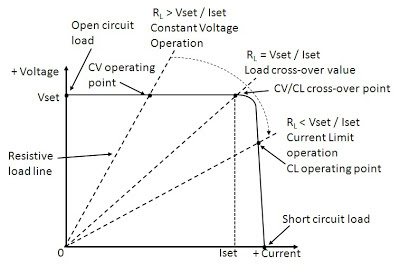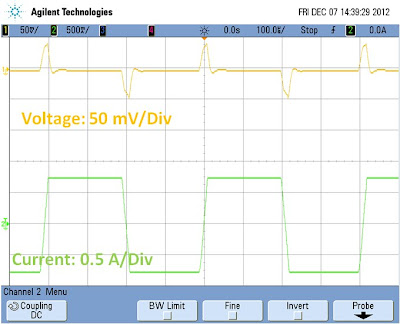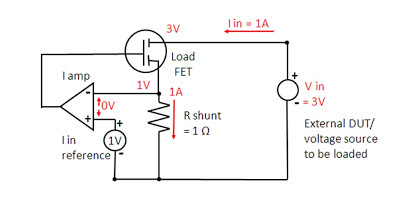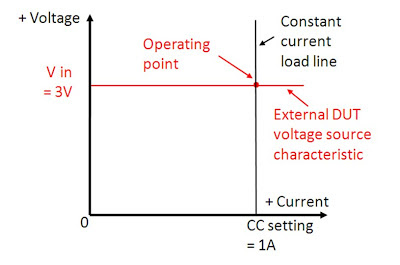Most electronic loads provide constant current (CC),
constant resistance (CR) and constant voltage (CV) loading. Some also offer
constant power (CP) loading as well. The primary reason for this is this gives
the test engineer a choice of loading that best addresses the loading
requirement for the DUT, which invariably is some kind of power source.
Most usually the device should be tested with a load that
reflects what the loading is like for its end use. In the most common case of a
device being predominantly a voltage source the most common loading choices are
either CC or CR loading, which we will look at in more detail here. Some feel
they can be used interchangeably when testing a voltage source. To some extent
this is true but in some cases only one or the other should be used as they can impact
the DUT’s performance quite differently.
Let’s first consider static performance. In Figure 1 we
have the output characteristics of an ideal voltage source with zero output
resistance (a regulated power supply, for example) and a non-ideal voltage
source having series output resistance (a battery, for example). Both have the same open circuit (no load) voltage.
Superimposed on these two source output characteristics are two load lines; one
for CC and one for CR. As can be seen they are set to draw the same amount of
current for the ideal voltage source. However, for the non-ideal voltage
source, while the CC load still continues to draw the same amount of current in spite of the voltage drop,
not surprisingly the CR load draws less current due to its voltage-dependent
nature.
Figure 1: CC and CR loading of ideal and non-ideal
voltage sources
CC loading is frequently used for static power supply
tests for a key reason. Power supplies are usually specified to have certain
output voltage accuracy for a fixed level of current. Using CC loading assures the
loading condition is met, regardless of power supply’s output voltage being low
or high, or in or out of spec. Non-ideal voltage sources, like batteries,
present a little more of a problem and are often specified for both CC and CR
loading as a result, to reflect the nature of the loading they may be subjected
to in their end use. Due to a battery's load-dependent output voltage, trying to use one type of loading in place the other becomes
an iterative process of checking and adjusting loading until the acceptable operating
point is established.
Let’s now consider dynamic performance. CC loading generally has a greater impact on a
power supply’s ability to turn on as well as its transient performance and
stability, in comparison to CR loading. When the power supply first starts up
its output voltage is at zero. A CR load would demand zero current at start up.
In comparison a CC load still demands full current. Some power supplies will
not start up properly under CC loading. With regard to transient response and
stability, CR loading provides a damping action, increasing current demand when
the transient voltage increases and decreases demand when the transient voltage
decreases, because the current demand is voltage dependent. CC loading does not
do this, which can negatively influence transient response and stability
somewhat. Whether CC or CR loading is used depends on what the power supply’s
specifications call out for the test conditions. Batteries have some dynamic
considerations as well. Their output response can be modeled as a series of
time constants spanning a wide range of time. This presents somewhat of a
moving target for an algorithm that uses an iterative approach to settling on
an acceptable operating point.
This is just a couple of examples of how a load’s
characteristic affects the performance of the device it is loading, and why electronic
loads have multiple operating modes to select from, and worth giving thought next
time towards how your device is affected by its loading!






































